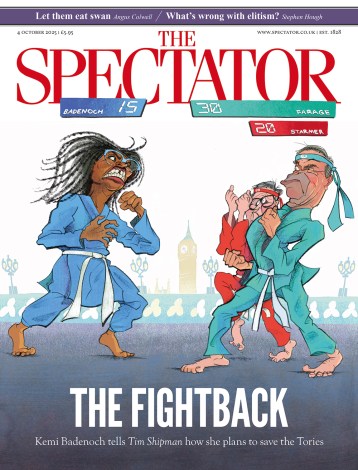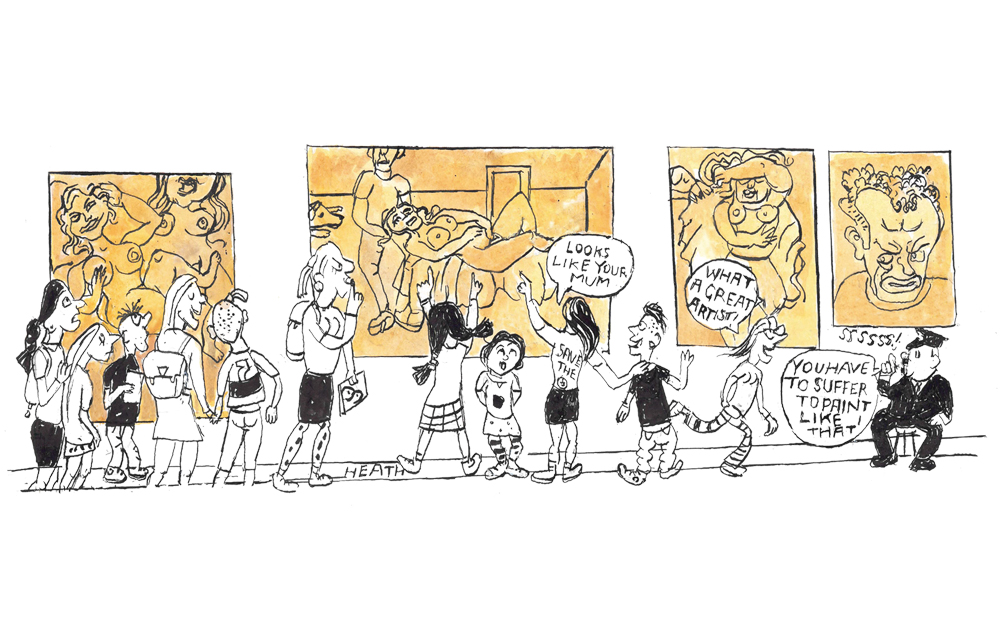Christmas in the countryside – what could be better? All right, at the time of writing we’ve had such storms that the swans are swimming across the flooded fields and we squelch through thick mud when we take the dogs out, but we hope the sun will come out tomorrow. I don’t just write about little orphan Annies – I’m starting to sound like one, too. But rain or shine, Christmas will be lovely, with a Christmas tree in the village square, shops serving free mulled wine and mince pies, a barber-shop choir singing in the real barber’s shop, and the nursery school children reverently laying Baby Jesus in his crib at Christingle. One splendid year a child memorably dressed as a camel kidnapped Baby Jesus and galloped down the aisle with him.
It will still be muddy, but I can deal with it. My designer clothes and fancy heels are so far at the back of my wardrobe that they’re practically in Narnia. I live in jumpers and jeans and Docs now, though I still wear my big flashy rings. I’m not a farmer required to shove my arm up an animal to help it give birth. However, I’ve caught my partner browsing Country Smallholder in WHSmith several times, and she’s a big fan of the Yorkshire Shepherdess. If she wants to play Bo-Peep then she’s on her own, though I do remember Beatrix Potter went from writing for children to breeding prize-winning Herdwick sheep. I have to admit that I can’t distinguish one breed of sheep from another, apart from those lovely Valais blacknose sheep that look as if they’ve been sired by Shetland ponies.
I come into my own when it’s a case of identifying wild flowers. This is solely because I adored Cicely Mary Barker’s Flower Fairies books when I was a little girl. In his erudite book on fairy art, Christopher Wood only gives Barker a brief mention, damning her with the faintest of praise by saying she was ‘enormously popular’. I understand his point. It’s like Constable paintings reproduced on chocolate boxes – it’s difficult to see ‘The Hay Wain’ with fresh eyes when it’s serving duty as your button box. Flower Fairies are still flitting all over merchandise. I shall be delighted if I get given a biscuit tin this Christmas with a Flower Fairy picture on the top. Of course Barker paintings aren’t Great Art – they’re Small Art, intended for young children. It’s because of my devotion to these books that I can now tell Jack By the Hedge from Jack Go to Bed at Noon. When the dogs come back from a walk with nasty little burrs stuck in their fur, I know Agrimony is the culprit.
My favourite Flower Fairy of the Wayside was always the White Bindweed Fairy, because she looked so pretty in her white dress, with a cute little green cap on her dark hair. But even kindly Cicely warns in a postscript that bindweed is not good to have in gardens, though it is so beautiful, because it winds around other plants and trees. One of its names is ‘Hedge strangler’. It’s been happily strangling hedges for a long time. The great herbalist John Gerard wrote in 1597 that convolvulus is an ‘unprofitable weed, hurtful unto each other thing that groweth next unto them’.
When I recently decided to write a story about a child who discovers that the strange pressed flower inside an old library book is one of the last fairies in England, I knew at once she had to be a Bindweed Fairy. My Bindweed has the determination and resourcefulness to last for ever. When she teams up with my little girl Mab, she unwittingly teaches her resilience (she’s a Victorian fairy and the word was only invented in the 1970s). But I hope it’s not a moral tale, just a rollicking story to lighten the mood in these bizarre times.
I went up to London this week to see the Lucian Freud exhibition. I particularly love his early eerily precise artwork, especially the portraits of Kitty Garman and Lady Caroline Blackwood, and admire the overwhelming fleshy later paintings. I was surprised by the number of families taking small children along. They seemed mildly interested in the bosoms and bellies and genitals on show, but none seemed shocked or inclined to snigger. Children are so much more sophisticated now. In my childhood days they’d have gone crimson with embarrassment or deafened the gallery with shrieks of laughter. It’s reassuring to know that they still believe in Father Christmas – or are the older ones simply being artful?
The children in the village certainly believe in him. He comes to meet them and sits in his own grotto at the back of the village pub. Perhaps his reindeers are grazing with the cows and sheep in the nearby fields. He chats to each child and hands out little presents and on a Saturday stands on the precarious balcony of the ancient village store and starts the special countdown. The lights on the Christmas tree flash on as if by magic. Christmas in the countryside – what could be better?
Jacqueline Wilson’s Project Fairy is out now.






Comments